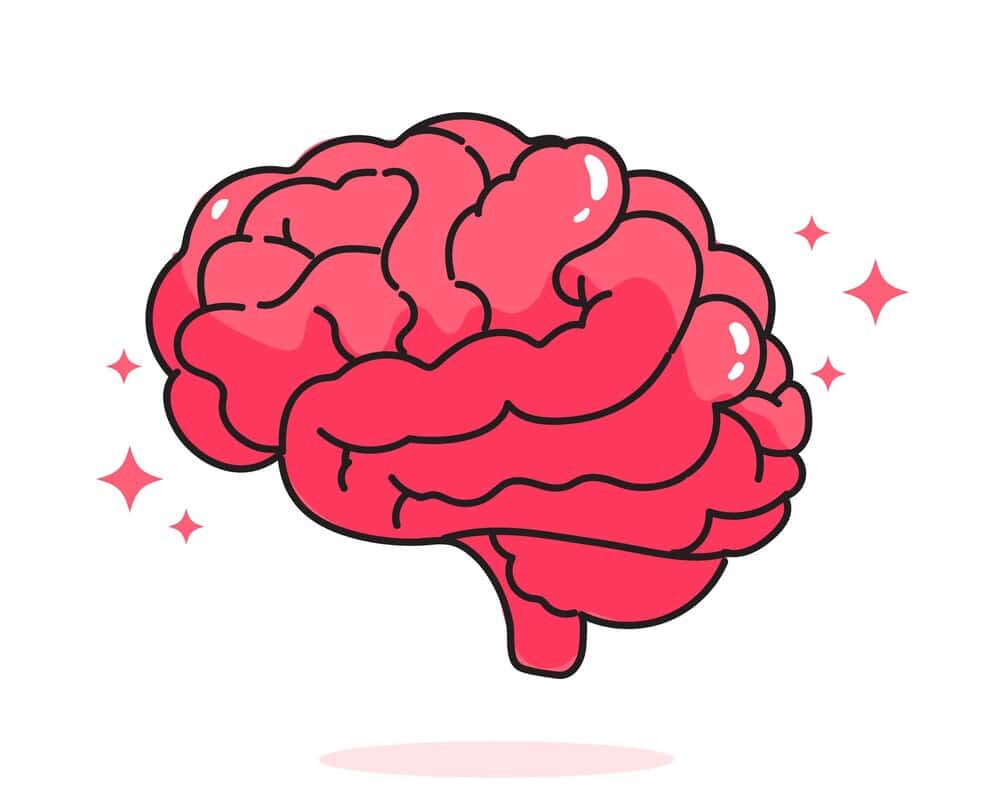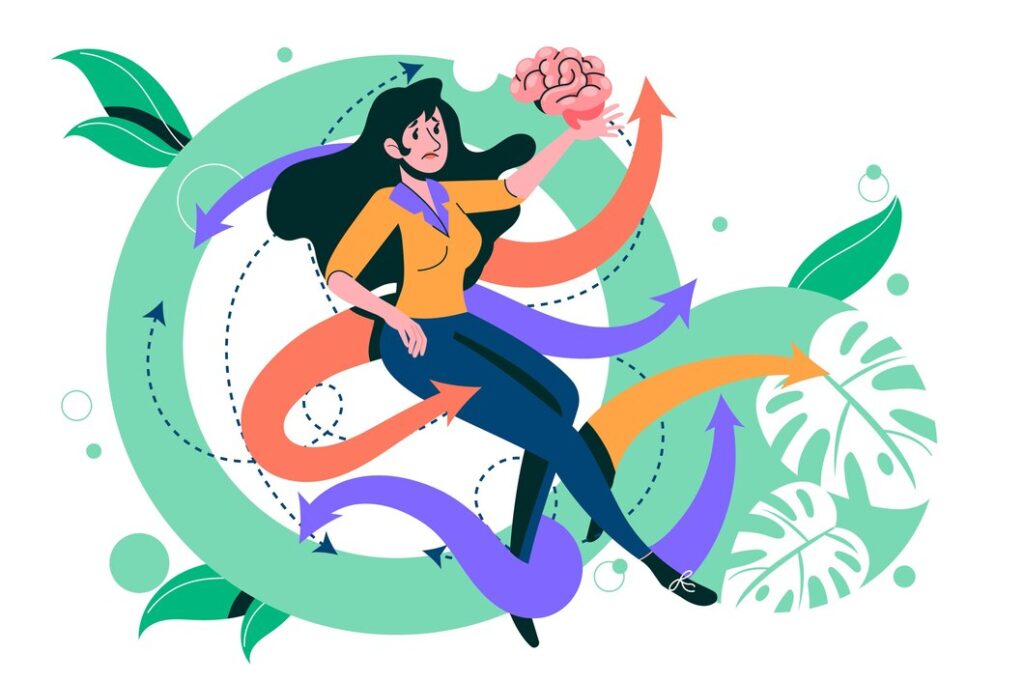Key Takeaways
- ADHD is a developmental disorder affecting attention, hyperactivity, and impulsivity, impacting both children and adults.
- Genetic factors, environmental influences, and brain structure contribute to the development of ADHD.
- Symptoms include inattention, hyperactivity, and impulsive behavior, levels of which can vary between individuals.
- A Mission for Michael (AMFM) provides holistic and evidence-based treatment for adults with mental health challenges like ADHD, depression, trauma, and more.
What is ADHD?
Attention Deficit Hyperactivity Disorder (ADHD) is a neurodevelopmental disorder with persistent symptoms of inattention, hyperactivity, and impulsivity. It affects how individuals manage their behavior, emotions, and attention span, often leading to difficulties in school, work, and social settings.
- Inattention: Trouble focusing, being easily distracted, disorganized, forgetful
- Hyperactivity: Excessive movement, inability to stay still or fidgeting
- Impulsivity: Acting without thinking, interrupting others
Not everyone with ADHD will exhibit all these symptoms; the presentation can vary widely.
Prevalence in Children and Adults
An estimated 6.5 million children (10.5%) and 15.5 million adults (6.0%) are currently diagnosed with ADHD. Boys are diagnosed more often than girls due to differing symptoms. Some children outgrow it, while others carry symptoms into adulthood.
Many adults struggle with work, relationships, and daily life, unaware their challenges stem from unrecognized childhood symptoms.
| A Mission For Michael: Expert Mental Health Care Founded in 2010, A Mission For Michael (AMFM) offers specialized mental health care across Southern California, Washington, and Virginia. Our accredited facilities provide residential and outpatient programs, utilizing evidence-based therapies such as CBT, DBT, and EMDR. Our dedicated team of licensed professionals ensures every client receives the best care possible, supported by accreditations from The Joint Commission and the California Department of Health Care Services. We are committed to safety and personalized treatment plans. Start your recovery journey with AMFM today! |
Causes of ADHD
The exact cause of ADHD is not fully understood, but research indicates it is likely the result of a combination of genetic, environmental, and neurological factors:
- Genetics: Children with a parent or sibling with ADHD are more likely to develop the condition themselves.
- Environmental Influences: Prenatal exposure to alcohol, tobacco, or drugs; along with low birth weight, premature birth; and environmental toxins like lead can increase the risk of developing ADHD.
- Social Settings: Family dynamics and educational settings can influence the severity and presentation of ADHD symptoms.
- Diet: Recent studies suggest that certain food additives or sugar can worsen ADHD symptoms in some children.
- Brain Structure and Function: Research shows that individuals with ADHD may have differences in brain structure and function – particularly in areas like the prefrontal cortex, which controls attention and impulse regulation.

Symptoms of ADHD
ADHD symptoms can vary widely among individuals – some primarily experience inattention, others exhibit hyperactivity-impulsivity, and many display a combination of both.
Symptoms of Inattention
Inattention can manifest for individuals in a number of ways, including when they:
- Frequently lose important items like keys, wallets, or paperwork.
- Struggle to sustain attention during tasks, conversations, or lectures.
- Avoid tasks requiring sustained attention, like homework or lengthy reading.
- Miss out details and make careless mistakes in school, work, or other activities.
- Forget daily responsibilities like running errands or keeping appointments.
- Lose focus and get easily sidetracked when starting tasks.
- Get easily distracted by unrelated thoughts or external stimuli.
- Seem distracted or inattentive when spoken to directly, as if not fully listening or even daydreaming.
- Find it hard to follow instructions or finish assignments, chores, or work.
- Have difficulty organizing tasks, managing time, and meeting deadlines.
Symptoms of Hyperactivity-Impulsivity
- Leave seats when staying seated is expected, like in class or meetings.
- Feel restless or on edge – often pacing or climbing at inappropriate times.
- Struggle to engage in quiet activities or hobbies.
- Move constantly, as if driven by a motor.
- Talk excessively or interrupt others during conversations.
- Speak out of turn, answering before questions are finished.
- Finish others’ sentences or interject inappropriately.
- Have trouble waiting in lines, conversations, or games.
- Struggle to follow social cues, such as taking turns while speaking.

Diagnosis of ADHD
Evaluation Process
ADHD evaluation starts with a detailed clinical interview to gather information about the individual’s symptoms, medical history, and family background.
Input from family members, teachers, or others may also be included to understand behavior in different settings.
Behavior Rating Scales
Behavior rating scales – like Conners Rating Scales and the ADHD Rating Scale-IV – are standardized tools commonly used to evaluate the presence and severity of ADHD symptoms.
These assessments are usually completed by parents, teachers, or the individuals themselves – providing a comprehensive view of the person’s behavior.
Clinicians will then compare an individual’s scores to established standards to confirm ADHD symptoms and create effective treatment plans.
Treatment Options for ADHD
Medication
Medication is a common treatment for ADHD:
- Stimulants – such as methylphenidate – are commonly prescribed to boost neurotransmitters, improving focus, attention, and impulse control.
- Non-stimulants – like atomoxetine and guanfacine – are alternatives for those who don’t respond well to stimulants or experience side effects.
Behavioral Therapy
Behavioral therapy, like Cognitive Behavioral Therapy (CBT), can help individuals identify and change negative thought patterns and behaviors that worsen the symptoms of ADHD.
CBT also uses cognitive and behavioral techniques to manage symptoms and improve organization, time management, and impulse control.
Psychoeducation
Psychoeducation teaches individuals, families, and educators about ADHD, its symptoms, and its impact on daily life.
This may involve working with teachers and school staff to implement accommodations – such as extended time on tests, preferential seating, or the use of assistive technology.
Compassionate Care for ADHD at A Mission for Michael
While living with ADHD can be challenging, you don’t have to do it alone. At A Mission for Michael (AMFM), we help adults manage ADHD alongside other mental health conditions like anxiety, depression, and trauma.
Our treatment programs focus on more than just symptoms – we work to address the underlying factors impacting your well-being.
We integrate structured therapy and modalities like Cognitive Behavioral Therapy (CBT) with holistic approaches like equine and art therapy to help you regain control and focus.

Our clinicians have master’s or doctorate-level degrees in mental healthcare, and are highly qualified and experienced at leading group, family, and individual therapy sessions.
Reach out today to learn how we can support you.
Start your recovery journey with AMFM today.
Frequently Asked Questions (FAQ)
What triggers ADHD?
ADHD is triggered by a combination of genetic, environmental, and neurological influences. While genetics play a significant role, environmental factors such as prenatal exposure to toxins, low birth weight, and premature birth can also contribute to the development of ADHD.
What are some strategies to manage ADHD?
- Schedule consistent time for waking, meals, work, and bedtime to reduce anxiety and improve focus.
- Set regular breaks for relaxation and exercise to maintain balance and manage energy.
- Organize spaces at home and work using visual reminders, checklists, and task breakdowns.
- Reduce distractions and set clear expectations to help individuals with ADHD stay focused and reach their goals.
What is A Mission for Michael?
A Mission for Michael (AMFM) is a mental health treatment center that provides specialized and compassionate treatment programs for individuals with ADHD and other mental health challenges like anxiety and depression.








